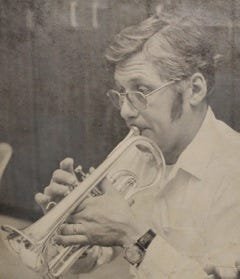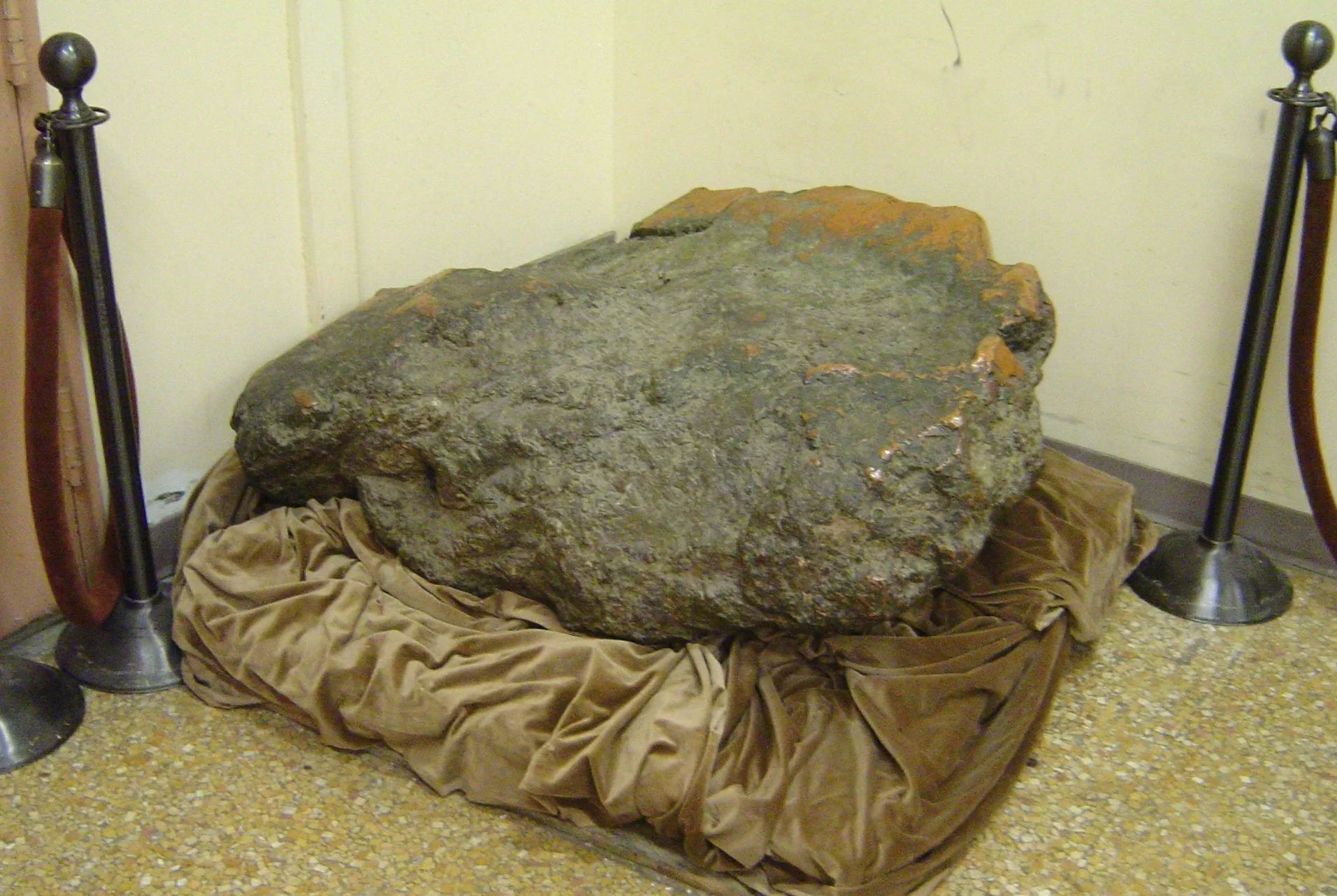What and Where is Ontonagon? (Part Three)
We started these articles with the question, ‘What and Where is Ontonagon?’
Actually, I wasn’t in town three weeks before I was caught up in the history of the place, starting with being recruited to bring my horn and sit in with a stage orchestra that was providing the music for a musical play, written and produced by the late Royce Willman for the benefit of the Ontonagon County Historical Society. This show was staged in the “Community Building,” in the large original auditorium, and many of the community activists took part.
A younger Bruce Johanson, playing his cornet.
Judge Charles Willman, Secretary of the Ontonagon County Historical Society had a small museum on the ground floor of the Holly House Hotel and it wasn’t long before I was shown around and became hooked on the fascinating history of this place. Living here for over 50 years has been a long and very interesting learning experience.
To make a long story short, I soon learned that Ontonagon is a very old town and the first permanent non-Native American settlement on the south shore of Lake Superior. There was an Ojibway village on the west bank of the river, near the mouth, that was established here after the Dakota were driven to places further west in the early 1700s. The Ojibway guarded the legendry Ontonagon Copper Boulder, which became the magnet that drew prospectors and land speculators to this area after the first Treaty of LaPoint allowed them to invade the Ojibway lands. A later Treaty of La Point signed in 1854 ceded the Ojibway lands to the U.S. Government, reserving specified lands to the Native Americans as well as hunting and fishing rights. The mining interests wanted copper (and silver).
The State of Michigan had been recognized in 1837 and Ontonagon County was designated for the first time in 1848 and included all of what is today Ontonagon and Gogebic Counties. Local legend gives one James K. Paul the credit for removing the 3,708-pound copper boulder from its long-time resting place on the west branch of the Ontonagon River in 1843. Others give the credit to one Julius Eldred of Detroit who actually purchased the Boulder from Chief O-Con-de-Cun for $150 and, after moving it down to the Lake for shipment, it was confiscated by the federal government and resides in the Smithsonian Institute in Washington, D.C.
The Ontonagon Copper Boulder inside the Smithsonian Institute. Photo by Ian Shackleford.
Jim Paul, who had arrived on May 2, 1841, became the first permanent white resident of this place and founded the Village.
Ontonagon was, first and foremost, a port on Lake Superior for the shipment of copper. During the Civil War, copper from the mines in the Keweenaw region were a major factor that contributed to the Union victory.
With the conclusion of the war between the states, the Ontonagon area went into a period of economic decline, until the great fire of Chicago in October 1871 created a demand for building lumber. The vast stands of pine in the Ontonagon River Valley supplied much of the lumber for the rebuilding of Chicago, as well as feedstock for billions of sulfur matches. The village was destroyed in a fire on August 25, 1896. This would have finished most towns, but not Ontonagon. The town was rebuilt, and though most of the pine was gone, logging turned to the harvest of hardwoods and other softwoods such as hemlock.
People who lived here were committed to this place.
To be continued…


